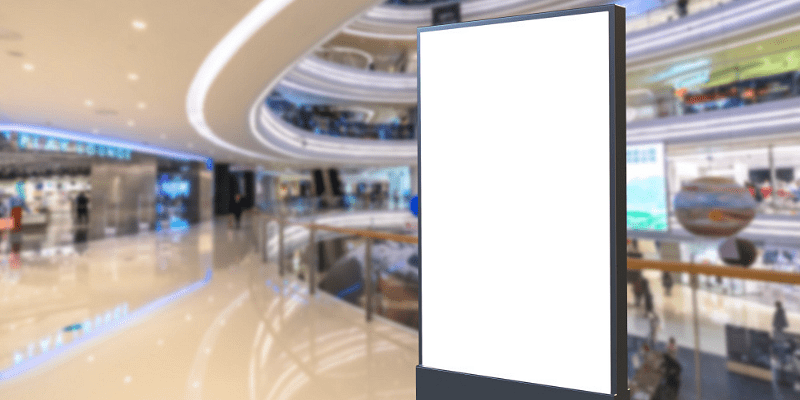Marketing and advertising revenues play an extremely important role in determining strong revenue inflows for shopping malls. Given the lockdown last year, with no operations for months together, it was only in August 2020 that malls could open.
Even then, it took a good amount of time for monetary recovery to get back on track. Slowly but steadily, retailers were happy with the results attained in the fourth quarter last year as footfalls increased.
Shopping malls and brands were able to somewhat meet financial targets and be on the way to steady recovery, while patrons embraced the new normal and continued visiting malls for leisure, in-person shopping, and having a great time.
However, when we speak of a great revenue stream, a large part of the figures is often attained from marketing and advertising strategies or partnerships.
What started as traditional methodologies has now evolved, and today, we have newer ways to achieve the return on investment (ROI).
As a consumer-facing industry, and one that saw the most massive hit due to lockdown last year, implementing next-generation marketing strategies to improve customer experiences has now become imperative for retailer among the many other ways to continue attracting patrons to the malls and outlets.
Here are a few marketing strategies that will outlive the pandemic.
Integrated marketing
Integrated marketing is where traditional meets modern-day marketing. Back in the day, traditional marketing strategies helped create a strong impact. Out of home (OOH) campaigns, standee’s, TV commercials, etc., were on the rise when social media was not as big as it is today.
Due to this shift in platforms, where people spend more time online, the end-consumer seeks validation from “what we see is what sells,” that is, what is visible on social media platforms, gains their attention.
Therefore, a dedicated integrated marketing campaign wins the race, that is, a campaign that would not only target traditional ways but also leverage social media influencers, celebrities, and online contests to execute the campaign.
Loyalty programmes
As a retailer, your brand loyalty is measured when your customer keeps coming back for more. With various loyalty programmes, have one that helps end-consumer avail themselves benefits and discounts on their shopping bills.
Entertainment with social commerce
Entertainment and commerce have always been intertwined, the importance of which was born out of the pandemic. Taking a cue from several international counterparts, the trend has now become widely popular in India.
Using social media platforms, including Instagram, Snapchat, Facebook, etc., for making the two meet with the use of filters, live streams, and short-form content has become a go-to strategy in this digital era. This provides an immersive experience for the end-consumer.
New media planning
The shift from traditional media to social media has been drastic, and so, new media planning and execution to the best capabilities and in accordance to the said campaign is the need of the hour.
It gives strong creative freedom for brands to explore when it comes to finding newer ways in their campaign content.
Ecommerce may continue to boom, but the brick-and-mortar shops and the in-person shopping experience has always been a priority for a consumer.
While 2020 saw no in-person shopping and migration to online purchasing, people still did miss the in-person experience. These industries will continue to co-exist for a very long time.
However, it still is a continuous effort to keep the consumer engaged with targeted advertising campaigns as their attention span continues to deteriorate.
Here’s how brands are leveraging in-store advertising to keep consumer attracted and engaged with the brand.
Make it visible
While most businesses rely on digital outlets for advertising products, given the shift in platforms, we cannot forget the age-old, full-proof strategy of in-store advertorials that are more enticing.
The touch and feel attraction of an in-person targeted promotion engages the consumer with the product more than a virtual representation. It helps in increased sales, brand awareness, product promotion, etc.
Robots are the future
The future of technology is here. Many international brands have been using robots for in-store advertising to boost customer morale and sales. Robots help you with insights about the product, and as programmed, address all queries they may have.
Omnichannel
Omnichannel is a way to provide customers with a seamless shopping experience across multiple channels, whether they’re shopping online, by telephone, or in person.
In conclusion, as the digital world continues to evolve and amaze us with great technological advancements, it is imperative to know that traditional ways are immortal, and with a little adaptation, they will prove to be effective, whereas newer strategies and ways will always be the fringe benefits for brands to banking on continuing luring customers.
(Disclaimer: The views and opinions expressed in this article are those of the author and do not necessarily reflect the views of YS.)



![Read more about the article [Funding alert] Fintech startup BankSathi raises $200K in seed round from angel investors](https://blog.digitalsevaa.com/wp-content/uploads/2021/05/Imagetr03-1621239833638-300x150.jpg)






